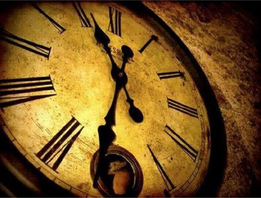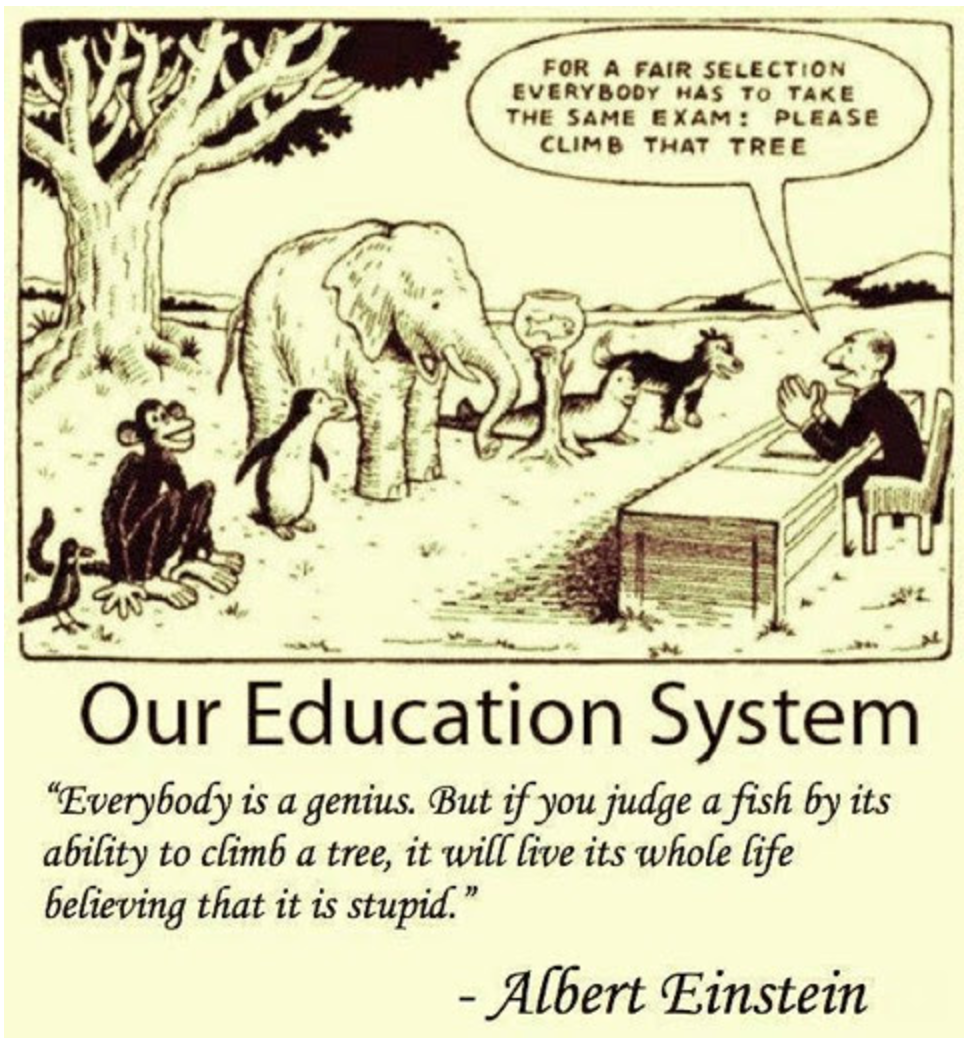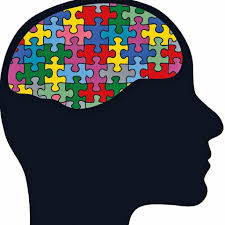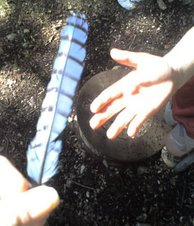
Societal Hands
by M.L. Crider
www.CriderInk.com
The ticking stopped, her heart, then my clock.
The usual cadence that had run me before this moment, its cocky pronounced presence that stewed in our societal background, ceased. My usual notice of its pressing and pushing on and on in each of our usual days, that stopped at once. Time's pointy disorganized teeth that seem forever contented in the endless gnawing out of society's feigned daily rhythm of things... reminding, prodding, poking from its vain place in the hierarchy, boasting dumb smiles here and there across its rotting mouth, that one, hushed. Suddenly, even it bowed in silence for the sacredness of this pregnant moment.
Void was now boss.
The incessant pecking out of time as we know and have agreed to call and adhere to as being, had always ensured that I know it be there encompassing all of us in its quiet ruling. I pressed “End” on my tacky shallow crap phone.
Death taunted like elusive fading rings of smoke, dissipating as quickly as the fickle life they had lived.
There was no such ticking now; there was no such ...anything to sense.
Explanation of the profundity of the moment of learning of death seems to rob its sacred essence with each… additional... word. Ah, but the quiet fortuity of not committing such forever branding occurrence to indelibility may indeed provide more hazard by way of the inherent irreverence which would otherwise be the refusal of concession in the taxing way of secret.
My mind, my throat, my existence took the hit of this heavy void like one victimizing inhale of cramped freeway exhaust. It insisted to stay. It clutched me as if some foreign tentacled vacuum had pierced my throat while the air that caressed the flowers and the regular sunset sounds each night seeped into, around me, and then them—as if only the memory of a single scent permeated and sustained like some old piano music lingers. A merciless phone call was the knife that instantly obliterated any sense of my now holding the promise of some kind of choice in being so mentally dexterous to be afforded a kind employment of any kind of logic for now. I had no choices. Pressing 'end' sliced the air and then sucked me down, enjoying the funneling of itself like a mean master whipping what he thinks he owns, into my cheap... deep chair. My throat refused to swallow. My tongue suddenly knew how large it was and for the first time it felt like a distant stranger in my mouth; even it didn't have a home anymore. Words seemed too shallow to be deserving of the inhale or the noise that they would have so bossily required. To speak of it, to give it sound, would have been to manicure the very sacred quiet of which had me in its grasp.
Death. News by telephone. The anonymity of its silent impervious gravity, the cheap bastard! A volcano erupted its unexpected lava from the pit of me; I would soon be coerced to pay handsomely albeit the vomit of flaming red's fast engine brewing in the living guts of me—fast tears, thick spit, heavy breathing, and sleep raped throughout twenty-four hour periods. I feared the potential cost to my usual days being that this had just rendered them notional; shock arrested the adrenals and so had me in its gloating trickery. Dumbstruck, unequivocally inept for any description that this quicksand yearned to locate in order to create some order inside, I sat.
Empty. Quiet.
Nothingness never felt so full.
She died.
Death: I would have to shake its inevitably bony hand now. How shallow and fickle the fingers of death! Their clammy indifference with offering a goodbye is like a man with no spine whose doughy hand touches yours in lieu of a strong man's most welcomed generous handshake. Callous nonchalance: like the sharp cackling and vexatious spirit of a coquettish old woman who boasts insensitively gluttonous blue-veined breasts that have drawn every man throughout her robotic manipulative life. The crawling greedy roots of a tree shoot fast up past the deep dirt that it uses as its home, suckling gentle life force from every scathing spear without a tossed thought.
I wanted to spit on death. I wished to incinerate the books that would attempt to teach of one's exact process in all things grieve.
Pride's turtle shell armor swelled to cover my angst. Defeated, I conceded such to this new insensitive timelessness—if only to have been done with it. The soundless air proved too stifling to conjure a noise or make any kind of even the slightest physical movement. Death does not deserve the kindness, the specificity, or the entitlement of being granted more time than it thieved from you, and the now deceased. Tomorrow may offer an excruciating crawl into acceptance, but for now? I hated death. I hated mere death with more keen investiture than dare I had ever felt passion or love for anyone.
It may indeed be dreamier for the dead to be dead from this body than they would have ever believed when living, but death news to this survivor served up a kaleidoscope of feelings that I knew the normal engine of my heart could simply not afford to supply.
© M.L. Crider
®WGA West 2012-2019. All Rights Reserved.
by M.L. Crider
www.CriderInk.com
The ticking stopped, her heart, then my clock.
The usual cadence that had run me before this moment, its cocky pronounced presence that stewed in our societal background, ceased. My usual notice of its pressing and pushing on and on in each of our usual days, that stopped at once. Time's pointy disorganized teeth that seem forever contented in the endless gnawing out of society's feigned daily rhythm of things... reminding, prodding, poking from its vain place in the hierarchy, boasting dumb smiles here and there across its rotting mouth, that one, hushed. Suddenly, even it bowed in silence for the sacredness of this pregnant moment.
Void was now boss.
The incessant pecking out of time as we know and have agreed to call and adhere to as being, had always ensured that I know it be there encompassing all of us in its quiet ruling. I pressed “End” on my tacky shallow crap phone.
Death taunted like elusive fading rings of smoke, dissipating as quickly as the fickle life they had lived.
There was no such ticking now; there was no such ...anything to sense.
Explanation of the profundity of the moment of learning of death seems to rob its sacred essence with each… additional... word. Ah, but the quiet fortuity of not committing such forever branding occurrence to indelibility may indeed provide more hazard by way of the inherent irreverence which would otherwise be the refusal of concession in the taxing way of secret.
My mind, my throat, my existence took the hit of this heavy void like one victimizing inhale of cramped freeway exhaust. It insisted to stay. It clutched me as if some foreign tentacled vacuum had pierced my throat while the air that caressed the flowers and the regular sunset sounds each night seeped into, around me, and then them—as if only the memory of a single scent permeated and sustained like some old piano music lingers. A merciless phone call was the knife that instantly obliterated any sense of my now holding the promise of some kind of choice in being so mentally dexterous to be afforded a kind employment of any kind of logic for now. I had no choices. Pressing 'end' sliced the air and then sucked me down, enjoying the funneling of itself like a mean master whipping what he thinks he owns, into my cheap... deep chair. My throat refused to swallow. My tongue suddenly knew how large it was and for the first time it felt like a distant stranger in my mouth; even it didn't have a home anymore. Words seemed too shallow to be deserving of the inhale or the noise that they would have so bossily required. To speak of it, to give it sound, would have been to manicure the very sacred quiet of which had me in its grasp.
Death. News by telephone. The anonymity of its silent impervious gravity, the cheap bastard! A volcano erupted its unexpected lava from the pit of me; I would soon be coerced to pay handsomely albeit the vomit of flaming red's fast engine brewing in the living guts of me—fast tears, thick spit, heavy breathing, and sleep raped throughout twenty-four hour periods. I feared the potential cost to my usual days being that this had just rendered them notional; shock arrested the adrenals and so had me in its gloating trickery. Dumbstruck, unequivocally inept for any description that this quicksand yearned to locate in order to create some order inside, I sat.
Empty. Quiet.
Nothingness never felt so full.
She died.
Death: I would have to shake its inevitably bony hand now. How shallow and fickle the fingers of death! Their clammy indifference with offering a goodbye is like a man with no spine whose doughy hand touches yours in lieu of a strong man's most welcomed generous handshake. Callous nonchalance: like the sharp cackling and vexatious spirit of a coquettish old woman who boasts insensitively gluttonous blue-veined breasts that have drawn every man throughout her robotic manipulative life. The crawling greedy roots of a tree shoot fast up past the deep dirt that it uses as its home, suckling gentle life force from every scathing spear without a tossed thought.
I wanted to spit on death. I wished to incinerate the books that would attempt to teach of one's exact process in all things grieve.
Pride's turtle shell armor swelled to cover my angst. Defeated, I conceded such to this new insensitive timelessness—if only to have been done with it. The soundless air proved too stifling to conjure a noise or make any kind of even the slightest physical movement. Death does not deserve the kindness, the specificity, or the entitlement of being granted more time than it thieved from you, and the now deceased. Tomorrow may offer an excruciating crawl into acceptance, but for now? I hated death. I hated mere death with more keen investiture than dare I had ever felt passion or love for anyone.
It may indeed be dreamier for the dead to be dead from this body than they would have ever believed when living, but death news to this survivor served up a kaleidoscope of feelings that I knew the normal engine of my heart could simply not afford to supply.
© M.L. Crider
®WGA West 2012-2019. All Rights Reserved.




 RSS Feed
RSS Feed



